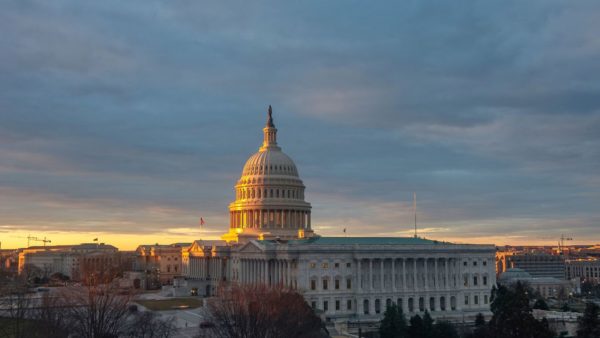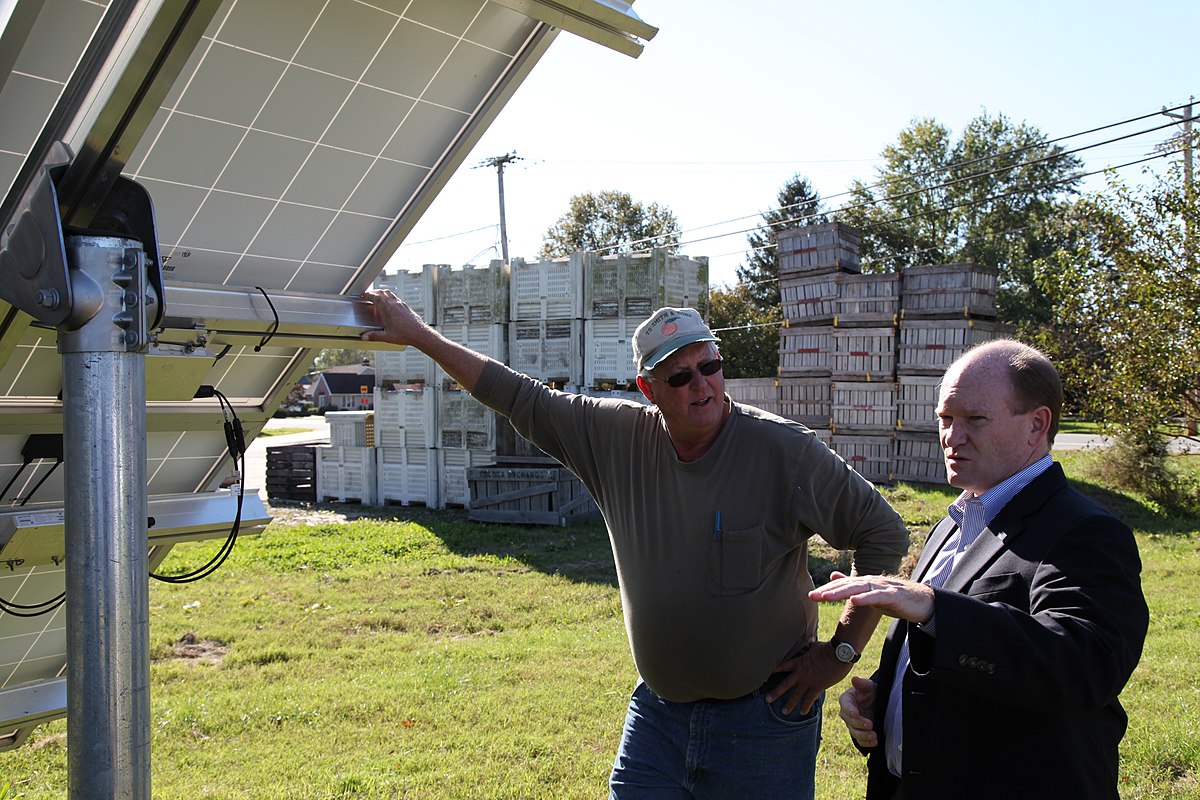The Biden administration’s proposed infrastructure bill will soon be in the hands of Congress, with a top-line budget expected to be developed this summer, and the reconciliation stage likely to occur around September.
With these dates in mind, the Solar Energy Industries Association (SEIA) rang the bell for a grassroots and industrywide push to persuade Congress to pass a sizable — and solar-friendly — bill.
(Read “SEIA outlines solar priorities in the federal infrastructure bill.”)
In a recent webinar, SEIA advocated for an expansive, lengthy extension of the federal solar investment tax credit, the inclusion of a separate tax credit for energy storage systems, and the creation of a direct-pay system.
Given the current executive and congressional makeup, SEIA called this an urgent “generational opportunity” for the industry to grow.

Image: Architect of the Capitol
With proper support, SEIA said the next decade could witness solar expand from a $25 billion-a-year industry to one that creates hundreds of billions in revenues, strengthens the economy, addresses the climate crisis, and paves the way for hundreds of thousands of jobs.
The Hill reported that Senate Minority Leader Mitch McConnell (R-KY) vowed that Republicans would wage a “hell of a fight” over attempts by Democrats to pass the multitrillion-dollar infrastructure plan along party lines. He reportedly said that there would be a “big argument” about Democrats’ plan to use reconciliation, which would allow them to bypass Republicans in the Senate.
“This is going to be a hell of a fight over what this country ought to look like in the future and it’s going to unfold here in the next few weeks,” McConnell was quoted as saying. “I don’t think we’ve had a bigger difference of opinion between the two parties.”
Three steps
Solar-supportive people and business members were given three steps to get involved:
1) Email your member of Congress, ask them to support a robust solar presence in the bill, and invite them to make a site visit to a local solar facility.
2) Download SEIA’s Hot Solar Summer Campaign toolkit to access solar data, talking points and messages, a guide on how to find your legislators, as well as advocacy strategy guides, graphics and other assets, and contacts for support.
3) Sign the solar industry sign-on letter for strong clean energy infrastructure policies.
SEIA advocacy
As a first step, SEIA said it sees value in driving support of a high top-line budget for the overall infrastructure bill. Then, as the solar portion of the bill is considered, its main priority is support for a long-term investment tax credit.
The group highlighted the support of U.S. manufacturing as being essential to achieving the administration’s clean energy targets. Recently introduced legislation by Sen. Jon Ossoff does well to support module manufacturing, SEIA said, but a more comprehensive, full suite of solar technologies will need to be included. The SEIA vision for the bill includes features like inverters, racking, monitoring, and so on.
To support this growth in manufacturing, SEIA called for the bill to include at least a 30%, 10-year solar investment tax credit, including storage. The organization said it is critical that the extension is made long term, so the industry has greater demand certainty.
Also called for during the webinar was capital expenditure support, including the creation of a U.S. manufacturing tax credit. In addition, SEIA said it sees value in the bill including ongoing production support in manufacturing. Specifically, U.S. manufacturing could benefit from growth in the production capacity of wafers, cells, and inverters, areas where SEIA said the nation currently lags.
This content is protected by copyright and may not be reused. If you want to cooperate with us and would like to reuse some of our content, please contact: editors@pv-magazine.com.









By submitting this form you agree to pv magazine using your data for the purposes of publishing your comment.
Your personal data will only be disclosed or otherwise transmitted to third parties for the purposes of spam filtering or if this is necessary for technical maintenance of the website. Any other transfer to third parties will not take place unless this is justified on the basis of applicable data protection regulations or if pv magazine is legally obliged to do so.
You may revoke this consent at any time with effect for the future, in which case your personal data will be deleted immediately. Otherwise, your data will be deleted if pv magazine has processed your request or the purpose of data storage is fulfilled.
Further information on data privacy can be found in our Data Protection Policy.